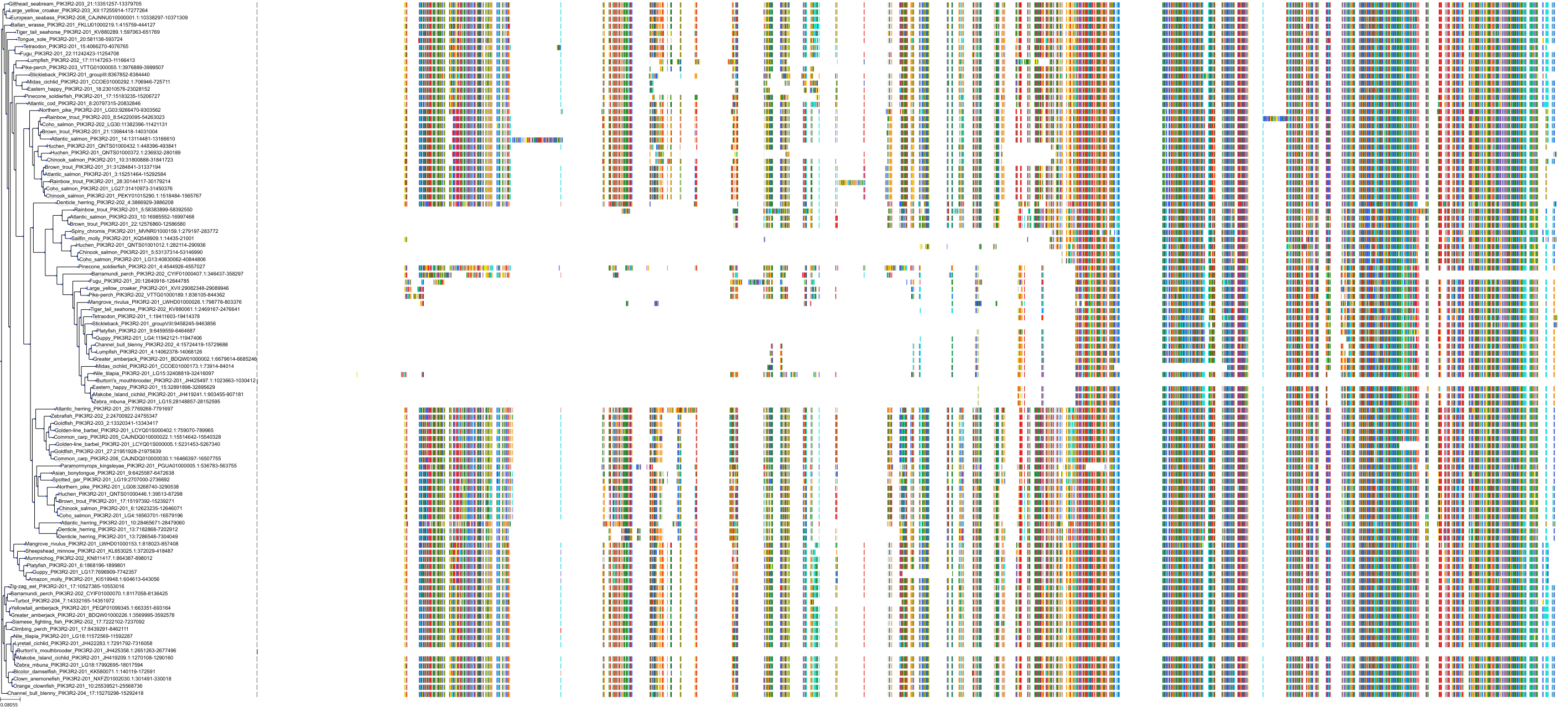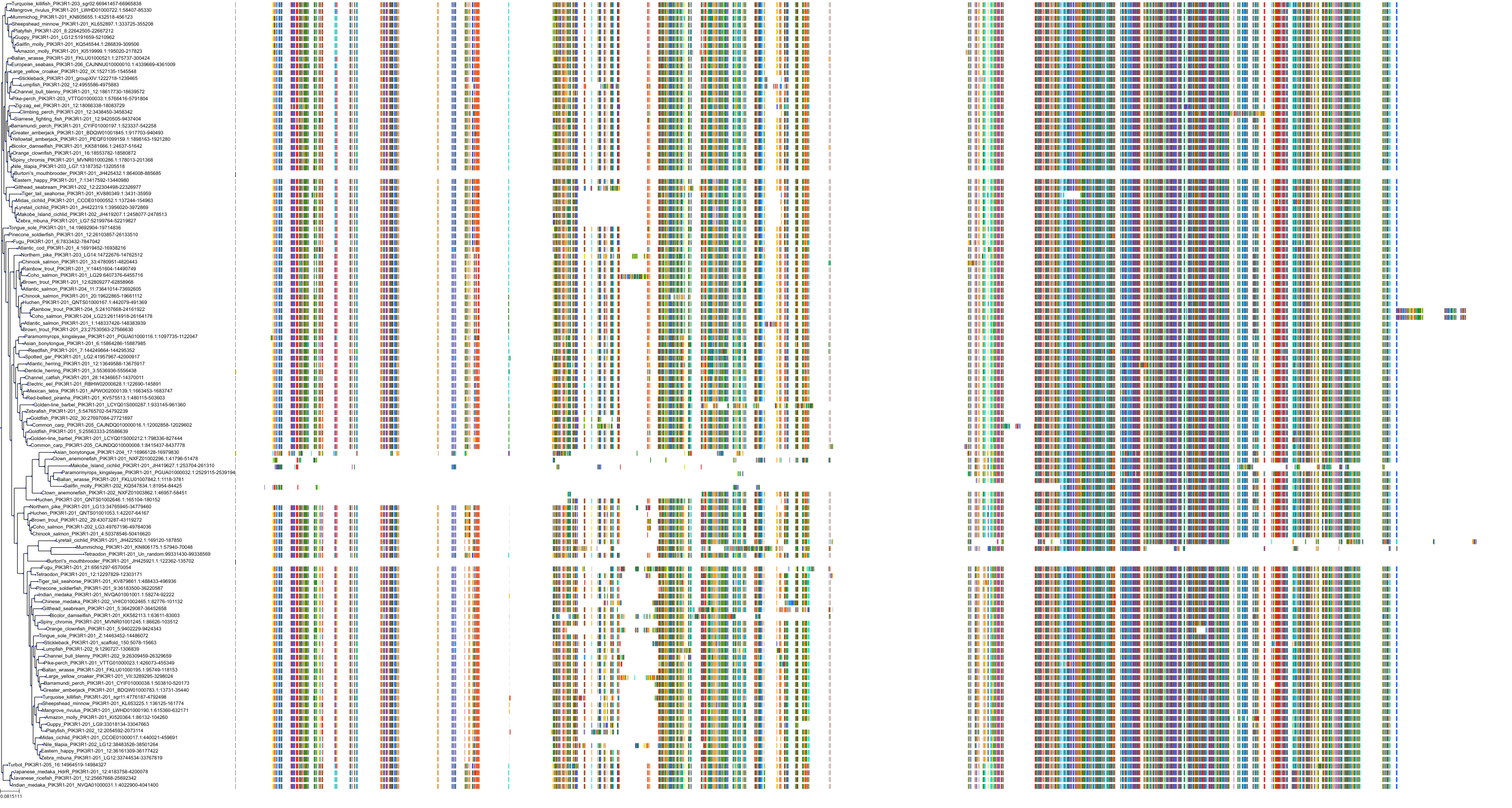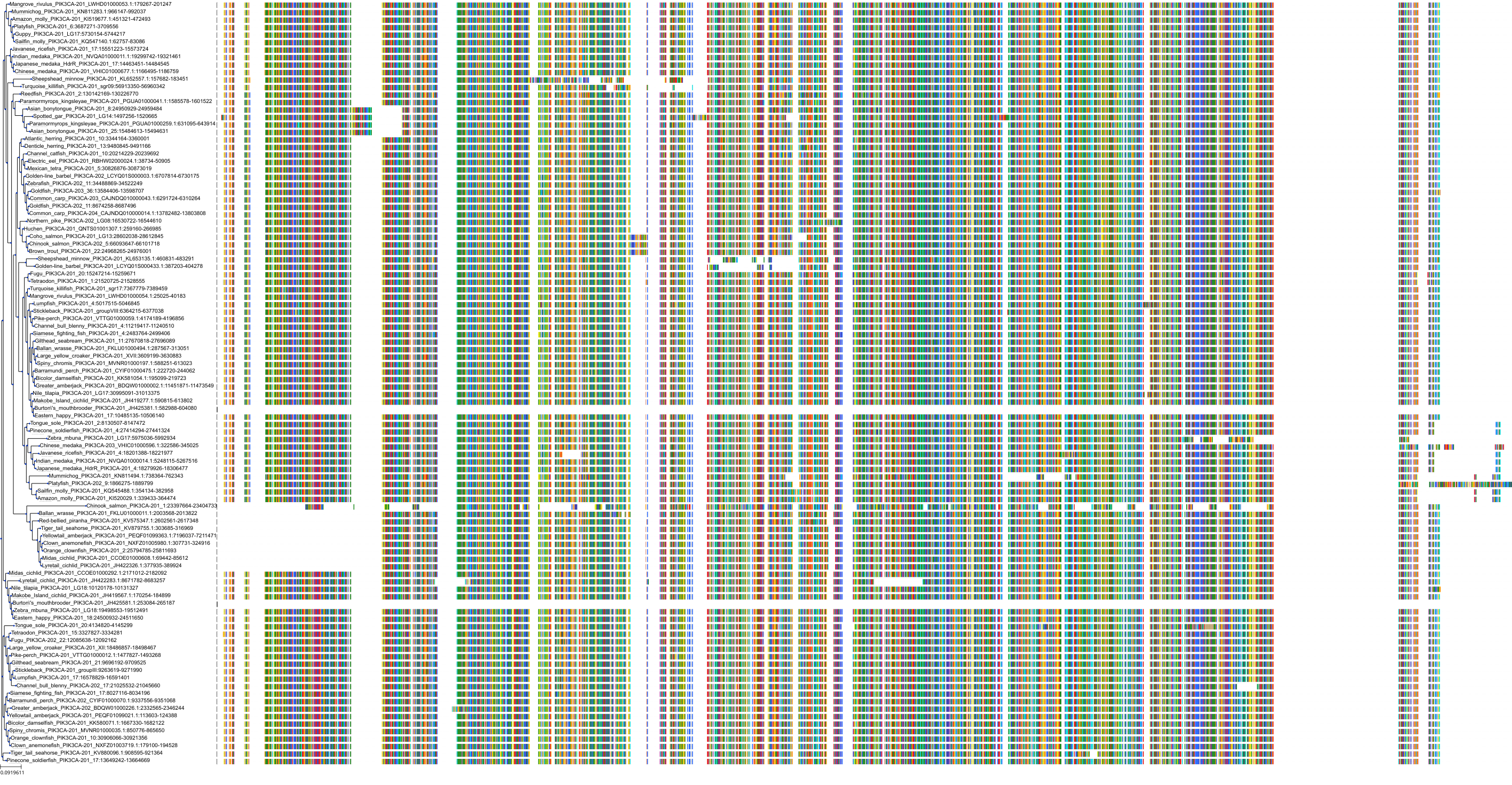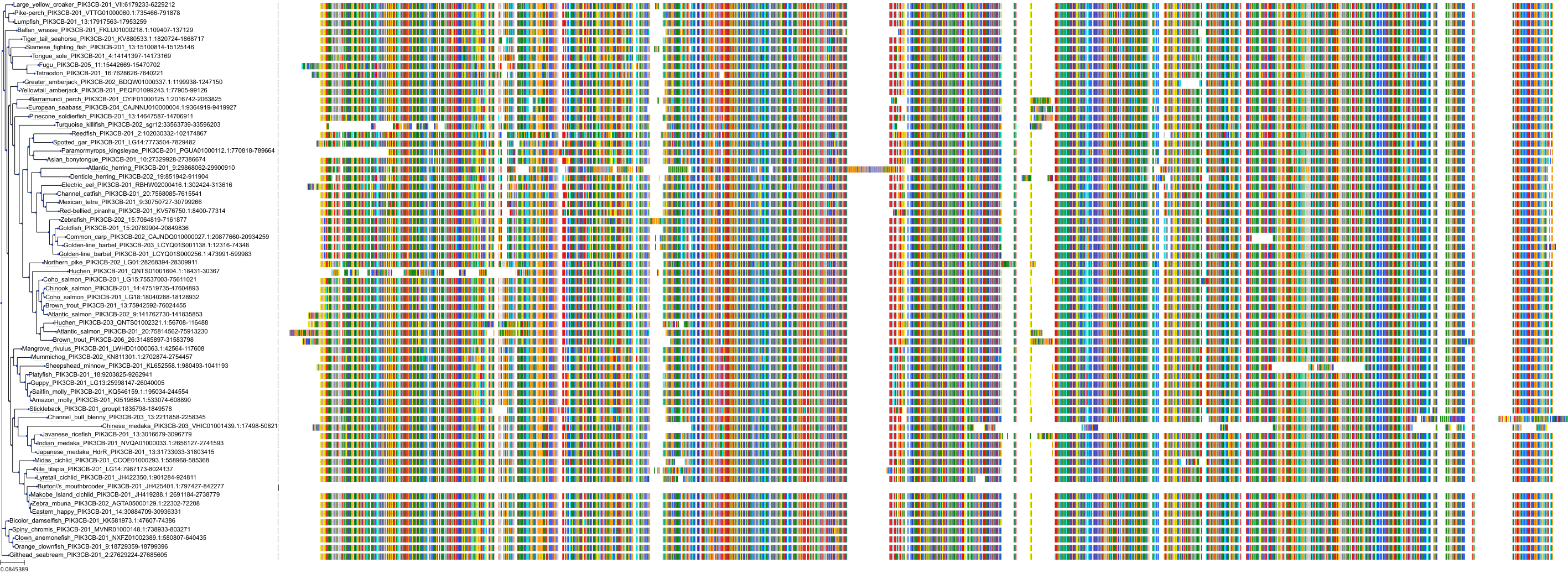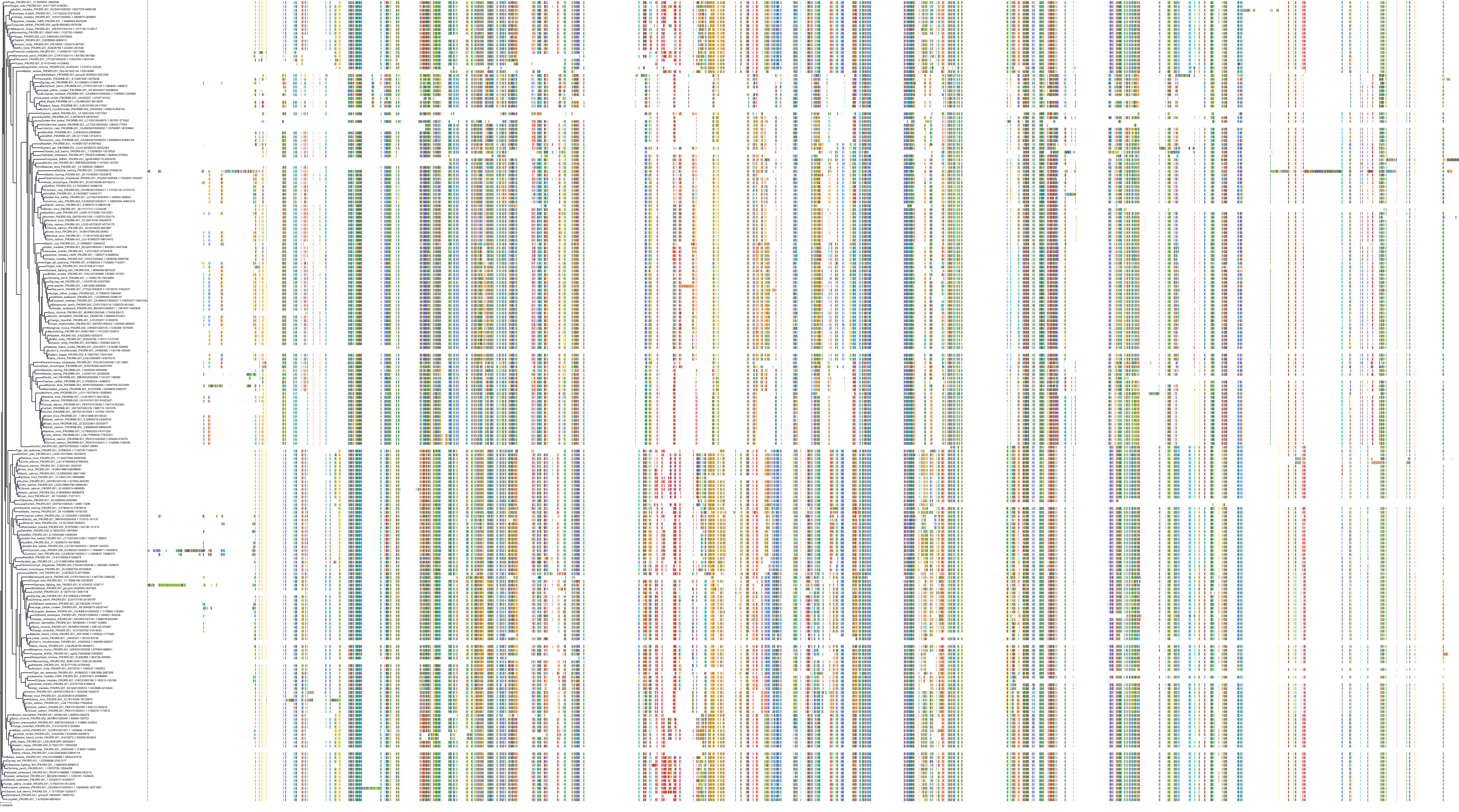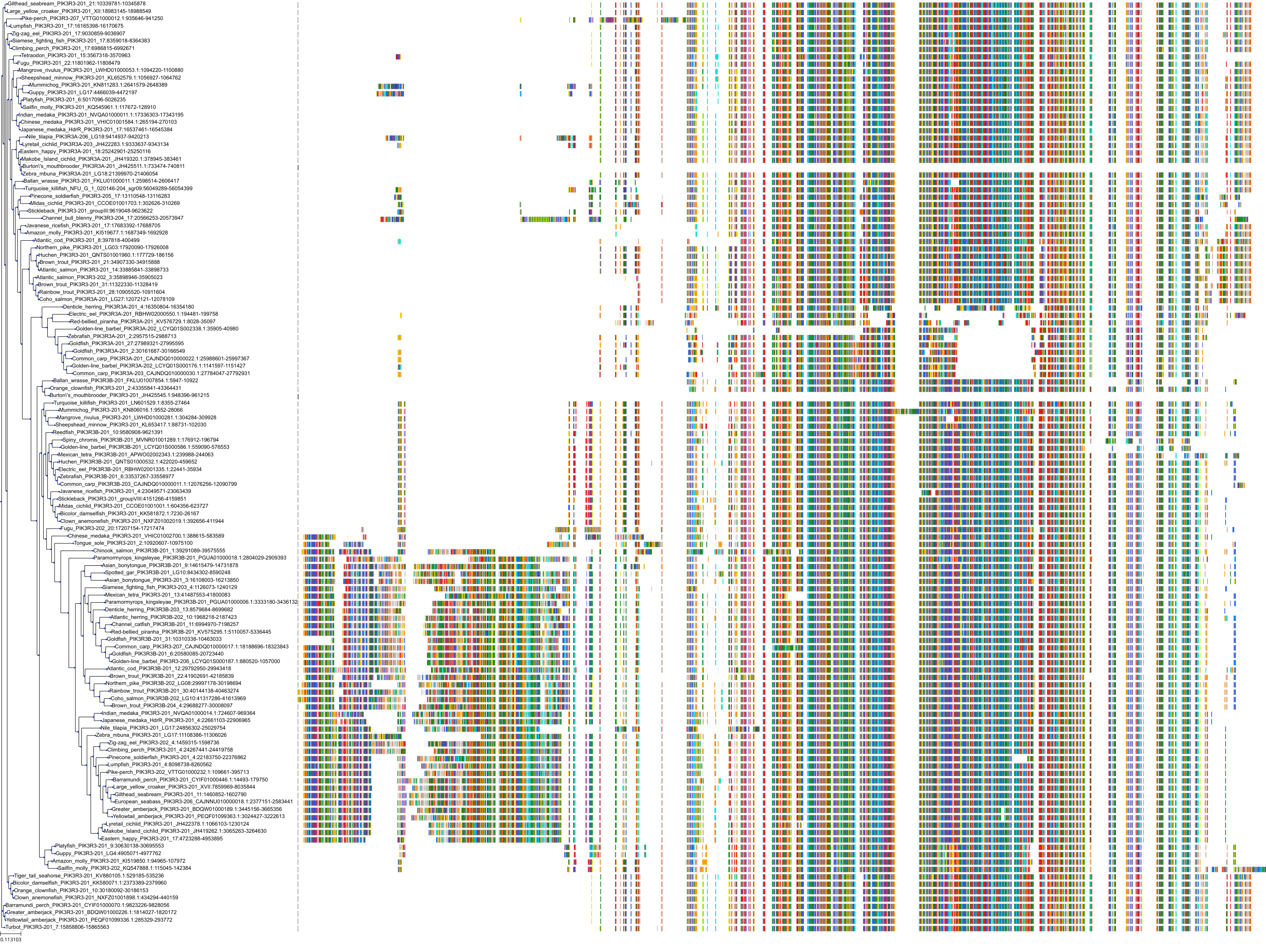|
GSK_TCMDC: Inhibition of Plasmodium falciparum 3D7 in whole red blood cells, using parasite LDH activity as an index of growth. Test compounds present at 2uM
|
Plasmodium falciparum
|
99.0
%
|
|
|
GSK_TCMDC: Inhibition of Plasmodium falciparum Dd2 in whole red blood cells, using parasite LDH activity as an index of growth. Test compounds present at 2uM
|
Plasmodium falciparum
|
99.0
%
|
|
|
GSK_TCMDC: Inhibition of Plasmodium falciparum 3D7 LDH activity, using an LDH reporter assay. Test compounds present at 2uM
|
Plasmodium falciparum
|
0.0
%
|
|
|
GSK_TCMDC: Percent inhibition of human HepG2 cell line. Test compounds present at 10uM.
|
Homo sapiens
|
47.0
%
|
|
|
Inhibition of rat brain mTOR assessed as p70S6K-GST protein phosphorylation after 30 mins by ELISA
|
Rattus norvegicus
|
45.0
nM
|
|
|
Inhibition of PI3K assessed as PIP3 level after 20 mins by HTRF assay
|
None
|
6.5
nM
|
|
|
Antiproliferative activity against human LNCAP cells after 3 days by MTS assay
|
Homo sapiens
|
210.0
nM
|
|
|
Inhibition of p110alpha
|
None
|
16.0
nM
|
|
|
Inhibition of p110beta
|
None
|
44.0
nM
|
|
|
Inhibition of p110gamma
|
None
|
49.0
nM
|
|
|
Inhibition of p110delta
|
None
|
4.6
nM
|
|
|
Inhibition of PIK3CA H1047R mutant-mediated cell signaling in human HCT116 cells expressing PTEN assessed as inhibition of insulin-induced pAkt/PKB phosphorylation at Thr308 treated for 15 mins before insulin challenge measured after 5 mins by immunoblotting
|
Homo sapiens
|
78.0
nM
|
|
|
Inhibition of PIK3CA H1047R mutant-mediated cell signaling in human HCT116 cells expressing PTEN assessed as inhibition of insulin-induced pAkt/PKB phosphorylation at Ser473 treated for 15 mins before insulin challenge measured after 5 mins by immunoblotting
|
Homo sapiens
|
97.0
nM
|
|
|
Inhibition of PIK3CA-mediated cell signaling in PTEN-deficient human U87MG cells assessed as inhibition of insulin-induced pAkt/PKB phosphorylation at Thr308 treated for 15 mins before insulin challenge measured after 5 mins by immunoblotting
|
Homo sapiens
|
32.0
nM
|
|
|
Inhibition of PIK3CA-mediated cell signaling in PTEN-deficient human U87MG cells assessed as inhibition of insulin-induced pAkt/PKB phosphorylation at Ser473 treated for 15 mins before insulin challenge measured after 5 mins by immunoblotting
|
Homo sapiens
|
111.0
nM
|
|
|
Inhibition of human PI3K p110alpha helical domain E545K mutant after 2 hrs by HTRF assay
|
Homo sapiens
|
12.0
nM
|
|
|
Inhibition of human His-tagged PI3K p110alpha H1047R mutant after 2 hrs by HTRF assay
|
Homo sapiens
|
25.0
nM
|
|
|
Inhibition of human His-tagged PI3K p110gamma after 2 hrs by HTRF assay
|
Homo sapiens
|
83.0
nM
|
|
|
Inhibition of human His-tagged PI3K p110delta after 2 hrs by HTRF assay
|
Homo sapiens
|
38.0
nM
|
|
|
Inhibition of human His-tagged PI3K p110beta after 2 hrs by HTRF assay
|
Homo sapiens
|
58.0
nM
|
|
|
Inhibition of human His-tagged PI3K p110alpha after 2 hrs by HTRF assay
|
Homo sapiens
|
8.9
nM
|
|
|
Antiproliferative activity against human NZOV9 cells expressing p110alpha kinase Y1021C mutant assessed as incorporation of [3H]thymidine after 5 days
|
Homo sapiens
|
290.0
nM
|
|
|
Antiproliferative activity against human NZB5 cells expressing wild type p110alpha assessed as incorporation of [3H]thymidine after 5 days
|
Homo sapiens
|
220.0
nM
|
|
|
Inhibition of bovine recombinant PI3K p110delta expressed in Sf21 insect cells using phosphatidylinositol as substrate after 1 hr by phosphoimaging
|
Bos taurus
|
0.7
nM
|
|
|
Inhibition of human recombinant PI3K p110beta expressed in Sf21 insect cells using phosphatidylinositol as substrate after 1 hr by phosphoimaging
|
Homo sapiens
|
4.8
nM
|
|
|
Inhibition of mouse recombinant PI3K p110alpha expressed in Sf21 insect cells using phosphatidylinositol as substrate after 1 hr by phosphoimaging
|
Mus musculus
|
8.6
nM
|
|
|
Inhibition of mTOR
|
None
|
350.0
nM
|
|
|
Inhibition of PI3Kalpha
|
None
|
26.0
nM
|
|
|
Inhibition of recombinant PI3Kalpha by HTRF assay
|
None
|
16.0
nM
|
|
|
Inhibition of recombinant PI3Kbeta HTRF assay
|
None
|
44.0
nM
|
|
|
Inhibition of recombinant PI3Kgamma HTRF assay
|
None
|
49.0
nM
|
|
|
Inhibition of recombinant PI3Kdelta HTRF assay
|
None
|
5.0
nM
|
|
|
Inhibition of PI3Kdelta
|
None
|
4.6
nM
|
|
|
Inhibition of PI3Kdelta (unknown origin) expressed in SF21 cells using phosphatidylinositol as substrate after 60 mins by Kinase-Glo assay
|
Homo sapiens
|
3.0
nM
|
|
|
Inhibition of PI3Kgamma (unknown origin) expressed in SF21 cells using phosphatidylinositol as substrate after 60 mins by Kinase-Glo assay
|
Homo sapiens
|
38.0
nM
|
|
|
Inhibition of PI3Kbeta (unknown origin) expressed in SF21 cells using phosphatidylinositol as substrate after 60 mins by Kinase-Glo assay
|
Homo sapiens
|
6.0
nM
|
|
|
Inhibition of PI3Kalpha (unknown origin) expressed in SF21 cells using phosphatidylinositol as substrate after 60 mins by Kinase-Glo assay
|
Homo sapiens
|
6.0
nM
|
|
|
Inhibition of PI3K-delta (unknown origin) assessed as decrease in ATP consumption using phosphatidylinositol bisphosphate and 10 uM ATP as substrate measured after 60 mins by luminescence assay
|
Homo sapiens
|
3.0
nM
|
|
|
Inhibition of PI3K-gamma (unknown origin) assessed as decrease in ATP consumption using phosphatidylinositol bisphosphate and 10 uM ATP as substrate measured after 60 mins by luminescence assay
|
Homo sapiens
|
38.0
nM
|
|
|
Inhibition of PI3K-beta (unknown origin) assessed as decrease in ATP consumption using phosphatidylinositol bisphosphate and 10 uM ATP as substrate measured after 60 mins by luminescence assay
|
Homo sapiens
|
6.0
nM
|
|
|
Inhibition of PI3K-alpha (unknown origin) assessed as decrease in ATP consumption using phosphatidylinositol bisphosphate and 10 uM ATP as substrate measured after 60 mins by luminescence assay
|
Homo sapiens
|
6.0
nM
|
|
|
Inhibition of PI3Kbeta (unknown origin)
|
Homo sapiens
|
44.0
nM
|
|
|
Inhibition of PI3Kalpha (unknown origin)
|
Homo sapiens
|
16.0
nM
|
|
|
Inhibition of PI3Kgamma (unknown origin)
|
Homo sapiens
|
49.0
nM
|
|
|
Inhibition of PI3Kdelta (unknown origin)
|
Homo sapiens
|
5.0
nM
|
|
|
Inhibition of human PI3KC2beta by non-radiometric ADP-Glo assay
|
Homo sapiens
|
180.0
nM
|
|
|
Inhibition of human PI3KCdelta by non-radiometric ADP-Glo assay
|
Homo sapiens
|
6.0
nM
|
|
|
Inhibition of human mTOR by non-radiometric ADP-Glo assay
|
Homo sapiens
|
370.0
nM
|
|
|
Inhibition of PI3K p110alpha (unknown origin)
|
Homo sapiens
|
16.0
nM
|
|
|
Inhibition of PI3K p110beta (unknown origin)
|
Homo sapiens
|
44.0
nM
|
|
|
Inhibition of PI3K p110gamma (unknown origin)
|
Homo sapiens
|
5.0
nM
|
|
|
Inhibition of PI3K p110delta (unknown origin)
|
Homo sapiens
|
49.0
nM
|
|
|
ST_JUDE_LEISH: Cytotoxicity at 2uM final concentration against transgenic Leishmania Mexicana promastigotes LmGLUT1 that are glucose transport deficient and complemented with the human glucose transporter GLUT1. Activity is measured by DNA content using SYBR green in vitro
|
Leishmania mexicana
|
2.11
%
|
|
|
ST_JUDE_LEISH: Cytotoxicity at 2uM final concentration against transgenic Leishmania Mexicana promastigotes LmPfHT that are glucose transport deficient and complemented with the Plasmodium falciparum hexose transporter. Activity is measured by by DNA content using SYBR green in vitro
|
Leishmania mexicana
|
2.9
%
|
|
|
ST_JUDE_LEISH: Cytotoxicity at 2uM final concentration against transgenic Leishmania Mexicana promastigotes LmGT2 that are glucose transport deficient and complemented with the L. Mexicana glucose transporter 2. Activity is measured by by DNA content using SYBR green in vitro
|
Leishmania mexicana
|
3.12
%
|
|
|
Inhibition of human recombinant PI3KC2beta using substrate PI incubated for 1 hr by Adapta kinase assay
|
Homo sapiens
|
180.0
nM
|
|
|
Inhibition of his-tagged human recombinant PIK3CD/PIK3R1 using substrate PI incubated for 1 hr by Adapta kinase assay
|
Homo sapiens
|
6.0
nM
|
|
|
Inhibition of human recombinant mTOR using substrate PI incubated for 1 hr by Adapta kinase assay
|
Homo sapiens
|
370.0
nM
|
|
|
Inhibition of PI3Kbeta (unknown origin) expressed in Escherichia coli-infected fall armyworm sf21 cells co-expressing p85 by kinase-glo luminescence assay
|
Homo sapiens
|
6.0
nM
|
|
|
Inhibition of recombinant human full length His-tagged PI3K p110alpha/p85alpha expressed in baculovirus expression system coexpressing PIK3R1 by TR-FRET assay
|
Homo sapiens
|
5.0
nM
|
|
|
Inhibition of PI3Kbeta (unknown origin) by TR-FRET assay
|
Homo sapiens
|
15.2
nM
|
|
|
Inhibition of recombinant human full length His-tagged PI3K p110gamma expressed in baculovirus expression system by TR-FRET assay
|
Homo sapiens
|
20.8
nM
|
|
|
Inhibition of recombinant human full length His-tagged PI3K p110delta/p85alpha expressed in baculovirus expression system coexpressing PIK3R1 by TR-FRET assay
|
Homo sapiens
|
3.9
nM
|
|
|
Inhibition of PI3Kalpha (unknown origin) using PIP2 as substrate after 1 hr by Kinase-Glo luminescent kinase assay
|
Homo sapiens
|
16.0
nM
|
|
|
Inhibition of PI3Kalpha H1047R mutant (unknown origin) by HTRF assay
|
Homo sapiens
|
50.0
nM
|
|
|
Inhibition of wild type PI3Kalpha (unknown origin) after 40 mins by kinase-Glo reagent based luminescence assay
|
Homo sapiens
|
50.0
nM
|
|
|
Inhibition of PI3Kbeta (unknown origin) after 40 mins by kinase-Glo reagent based luminescence assay
|
Homo sapiens
|
44.0
nM
|
|
|
Inhibition of PI3Kgamma (unknown origin) after 40 mins by kinase-Glo reagent based luminescence assay
|
Homo sapiens
|
51.0
nM
|
|
|
Inhibition of PI3Kdelta (unknown origin) after 40 mins by kinase-Glo reagent based luminescence assay
|
Homo sapiens
|
10.0
nM
|
|
|
Inhibition of PI3K p110gamma/p85alpha (unknown origin) assessed as reduction in PIP2 to PIP3 conversion by HTRF assay
|
Homo sapiens
|
4.6
nM
|
|
|
Inhibition of recombinant full length PI3K p85alpha/p110alpha H1047R mutant (unknown origin) expressed in baculovirus infected sf9 cells using PIP2 as substrate preincubated for 10 mins followed by ATP addition and measured after 45 mins by HTRF assay
|
Homo sapiens
|
50.0
nM
|
|
|
Inhibition of recombinant full length PI3K p110alpha/p85alpha (unknown origin) expressed in baculovirus infected sf9 cells using PIP2 as substrate preincubated for 10 mins followed by ATP addition and measured after 45 mins by HTRF assay
|
Homo sapiens
|
50.0
nM
|
|
|
Inhibition of PI3K-beta (unknown origin) after 40 mins by Kinase-Glo assay
|
Homo sapiens
|
44.0
nM
|
|
|
Inhibition of PI3K-gamma (unknown origin) after 40 mins by Kinase-Glo assay
|
Homo sapiens
|
51.0
nM
|
|
|
Inhibition of PI3K-delta (unknown origin) after 40 mins by Kinase-Glo assay
|
Homo sapiens
|
10.0
nM
|
|
|
Antiviral activity determined as inhibition of SARS-CoV-2 induced cytotoxicity of Caco-2 cells at 10 uM after 48 hours by high content imaging
|
Homo sapiens
|
90.88
%
|
|
|
Competitive inhibition of PI3Kalpha (unknown origin)
|
Homo sapiens
|
16.0
nM
|
|
|
Competitive inhibition of PI3Kbeta (unknown origin)
|
Homo sapiens
|
44.0
nM
|
|
|
Competitive inhibition of PI3Kdelta (unknown origin)
|
Homo sapiens
|
5.0
nM
|
|
|
Competitive inhibition of PI3Kgamma (unknown origin)
|
Homo sapiens
|
49.0
nM
|
|
|
SARS-CoV-2 3CL-Pro protease inhibition percentage at 20µM by FRET kind of response from peptide substrate
|
Severe acute respiratory syndrome coronavirus 2
|
7.52
%
|
|
SARS-CoV-2 3CL-Pro protease inhibition percentage at 20µM by FRET kind of response from peptide substrate
|
Severe acute respiratory syndrome coronavirus 2
|
6.614
%
|
|
|
Antiviral activity determined as inhibition of SARS-CoV-2 induced cytotoxicity of VERO-6 cells at 10 uM after 48 hours exposure to 0.01 MOI SARS CoV-2 virus by high content imaging
|
Chlorocebus sabaeus
|
0.59
%
|
|
Antiviral activity determined as inhibition of SARS-CoV-2 induced cytotoxicity of VERO-6 cells at 10 uM after 48 hours exposure to 0.01 MOI SARS CoV-2 virus by high content imaging
|
Chlorocebus sabaeus
|
5.36
%
|
|
Antiviral activity determined as inhibition of SARS-CoV-2 induced cytotoxicity of VERO-6 cells at 10 uM after 48 hours exposure to 0.01 MOI SARS CoV-2 virus by high content imaging
|
Chlorocebus sabaeus
|
5.36
%
|
|
Antiviral activity determined as inhibition of SARS-CoV-2 induced cytotoxicity of VERO-6 cells at 10 uM after 48 hours exposure to 0.01 MOI SARS CoV-2 virus by high content imaging
|
Chlorocebus sabaeus
|
0.59
%
|
|
|
Inhibition of human PI3Kalpha by TR-FRET based Adapta assay
|
Homo sapiens
|
5.0
nM
|
|
|
Inhibition of human PI3Kbeta by TR-FRET based Adapta assay
|
Homo sapiens
|
15.2
nM
|
|
|
Inhibition of human PI3Kgamma by TR-FRET based Adapta assay
|
Homo sapiens
|
20.8
nM
|
|
|
Inhibition of human PI3Kdelta by TR-FRET based Adapta assay
|
Homo sapiens
|
3.9
nM
|
|













